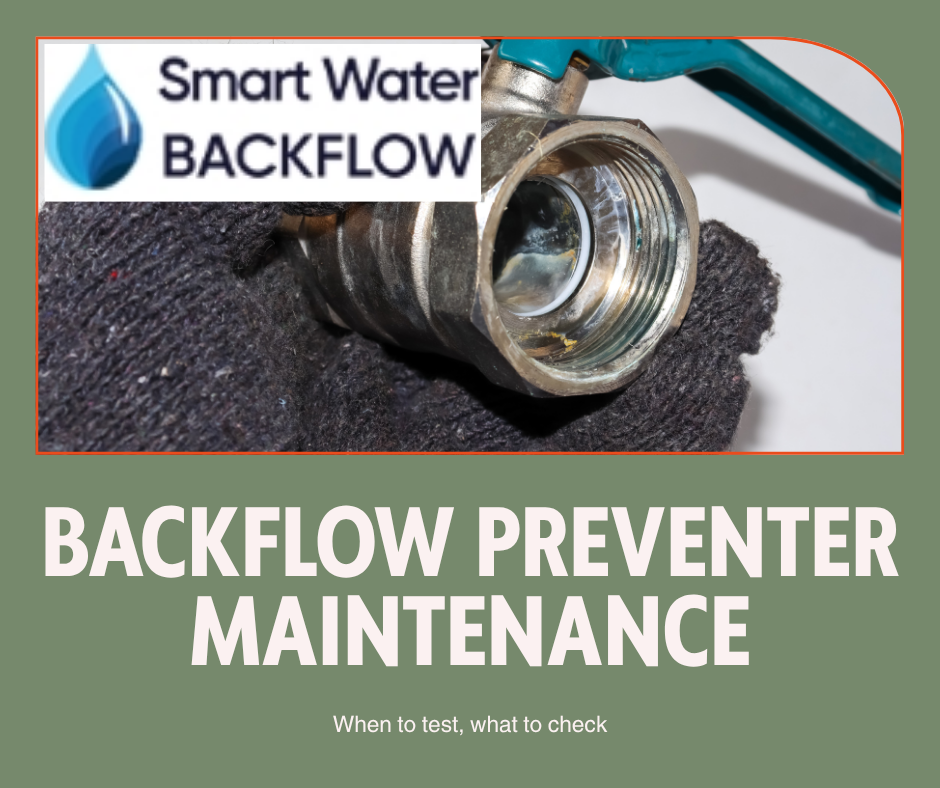Backflow Preventer Maintenance Made Easy: When to Test, What to Check, and When to Call a Pro

Backflow preventers are one of the most important — yet often overlooked — components of your plumbing system. Whether you’re a homeowner or run a small business, these devices are your first line of defense against contaminated water flowing back into your clean water supply.
In this guide, we’ll break down:
-
✅ When to test your backflow preventer
-
🔍 What you can safely inspect yourself
-
📞 When it’s time to call in the professionals
Let’s dive in.
🕒 When Should You Test Your Backflow Preventer?
Routine testing is more than just a good idea — in many locations, it’s a legal requirement. Here’s a quick breakdown of how often you should be checking your device:
| Property Type | Recommended Testing Frequency |
|---|---|
| Residential Homes | Once per year (annually) |
| Commercial Properties | Every 6–12 months |
| Irrigation Systems | Annually, before spring |
🔍 What You Can Check Yourself
You don’t need specialized tools to do a quick visual inspection. Here’s what you can safely check on your own:
✅ 1. Look for Leaks
Check around the valve body and connections. Any signs of dripping or pooled water can signal a problem.
✅ 2. Inspect for Corrosion or Wear
Rust, greenish buildup, or damaged parts might suggest aging or wear. Don’t ignore early signs — small issues can lead to major failures.
✅ 3. Ensure Valves Are Working
Open and close the shut-off valves to ensure they’re moving freely. Stuck or stiff valves might need professional service.
✅ 4. Watch for Pressure Problems
Low water pressure in your faucets or appliances may point to a blocked or malfunctioning backflow preventer.
🚫 What You Should NOT Do Yourself
While it’s great to perform basic checks, never attempt to open or disassemble a backflow preventer. Here’s why:
-
Internal testing requires certified equipment.
-
Tampering can void warranties or cause system damage.
-
You may violate local codes by attempting unauthorized repairs.
⚠️ Always leave testing and repairs to licensed professionals who can properly diagnose and certify the system.
👨🔧 When to Call a Pro
You should contact a certified backflow technician if you notice:
-
Consistent or unexplained leaks
-
Corrosion or visible damage
-
Changes in water taste, color, or pressure
-
A missed or failed annual test
Also, you should schedule routine testing or certification if:
-
You’ve installed a new irrigation system
-
You’re due for your annual compliance test
-
You’ve recently had plumbing work done
💡 Tip: Backflow testing only takes about 20–30 minutes when done by a pro — and can save you from expensive repairs or fines.
🧼 Final Maintenance Tips
-
Log all testing and service dates to stay compliant
-
Tag your device with the install date and contact info for your service provider
-
Schedule checks in early spring to prep for irrigation use and avoid the busy season
📞 Need Help? We’ve Got You Covered
At SmartWaterBackflow, our licensed experts provide fast, reliable testing, maintenance, and certification — all backed by full compliance documentation.
📅 Book your annual inspection today and protect your water supply the smart way.
Leave a Reply